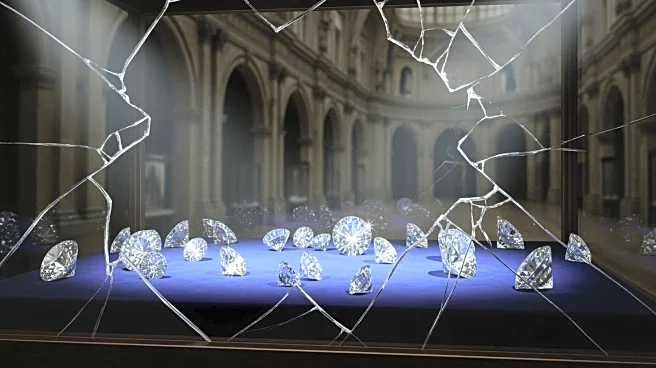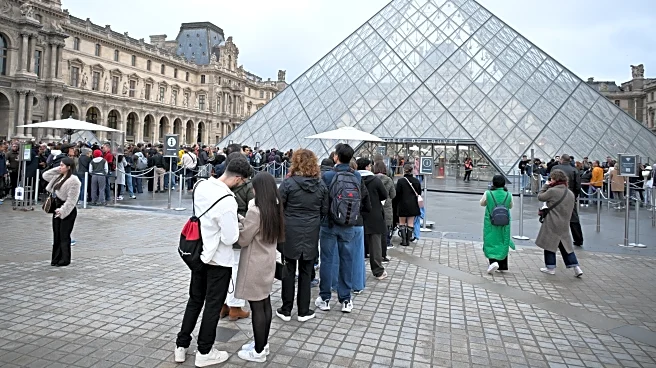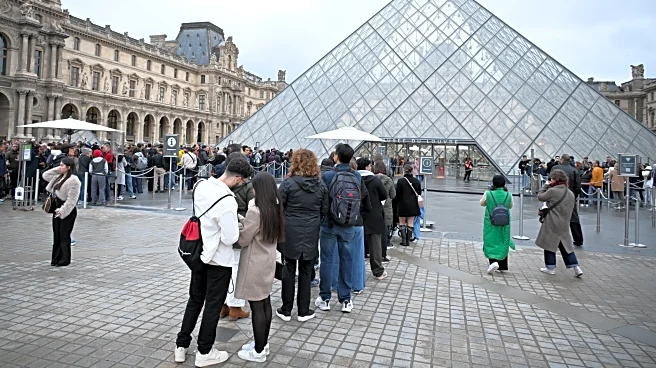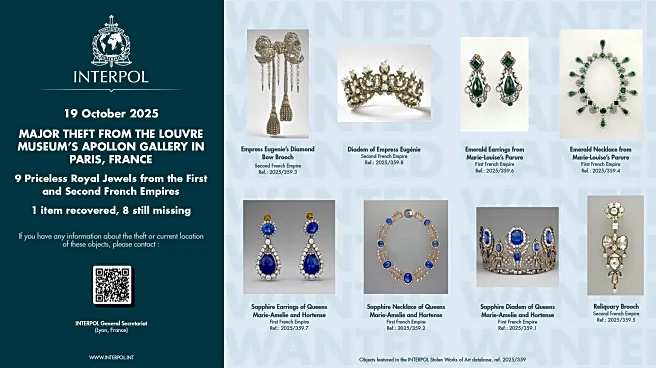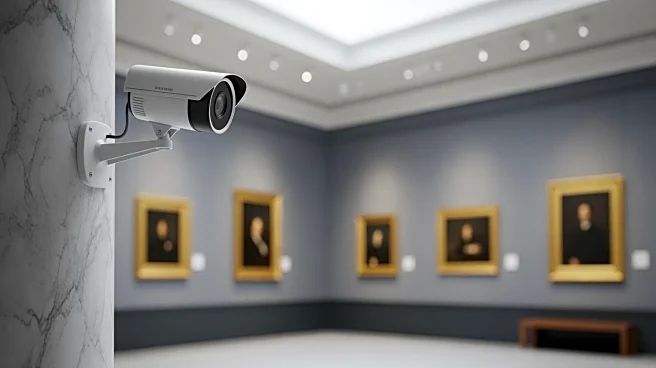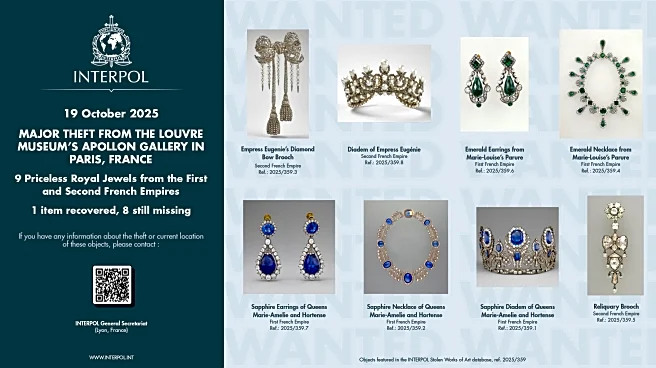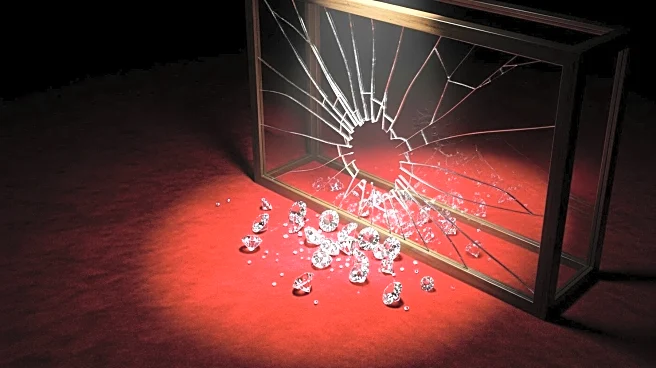What's Happening?
The recent theft of over $100 million worth of historic jewelry from the Louvre has sparked discussions about the nature of art heists. Laure Beccuau, the lead prosecutor in the case, suggested that organized crime or a major 'sponsor' might be behind
the theft. However, Christopher Marinello, CEO of Art Recovery International, refutes the idea of thefts being ordered by elusive masterminds. He explains that stolen art pieces are difficult to sell on the black market due to their recognizability, often fetching only a fraction of their true value. In contrast, jewelry can be more easily dismantled and sold as individual gems, making it a more lucrative target. The penalties for art theft are relatively light, with a maximum 10-year sentence in the U.S., which may contribute to the crime's appeal.
Why It's Important?
The economic implications of art theft are significant, affecting both the art market and museum security investments. Stolen artworks have low black market value, reducing the incentive for criminals to target them, which in turn affects museums' security measures. This creates a cycle where less valuable artifacts receive minimal protection, making them easy targets. The discussion highlights the need for museums to reassess their security strategies, especially for items that do not drive ticket sales. Additionally, the potential for dismantling and selling jewelry underscores the need for international cooperation in tracking and recovering stolen items.
What's Next?
The French government has yet to announce a reward for the return of the stolen items, but experts like Anthony Amore from the Isabella Stewart Gardner Museum advocate for such measures. The case may prompt museums to reconsider their security protocols and the legal system to evaluate the adequacy of penalties for art theft. The ongoing investigation will likely explore international channels to recover the stolen jewelry, potentially leading to policy changes in art protection and recovery.
Beyond the Headlines
The cultural impact of art theft extends beyond financial loss, as it deprives the public of access to cultural heritage. The ethical considerations of art recovery, including the potential damage to artifacts when dismantled, highlight the need for a balanced approach to security and preservation. The case also raises questions about the role of private collectors and the demand for stolen art, which can drive illegal activities.



